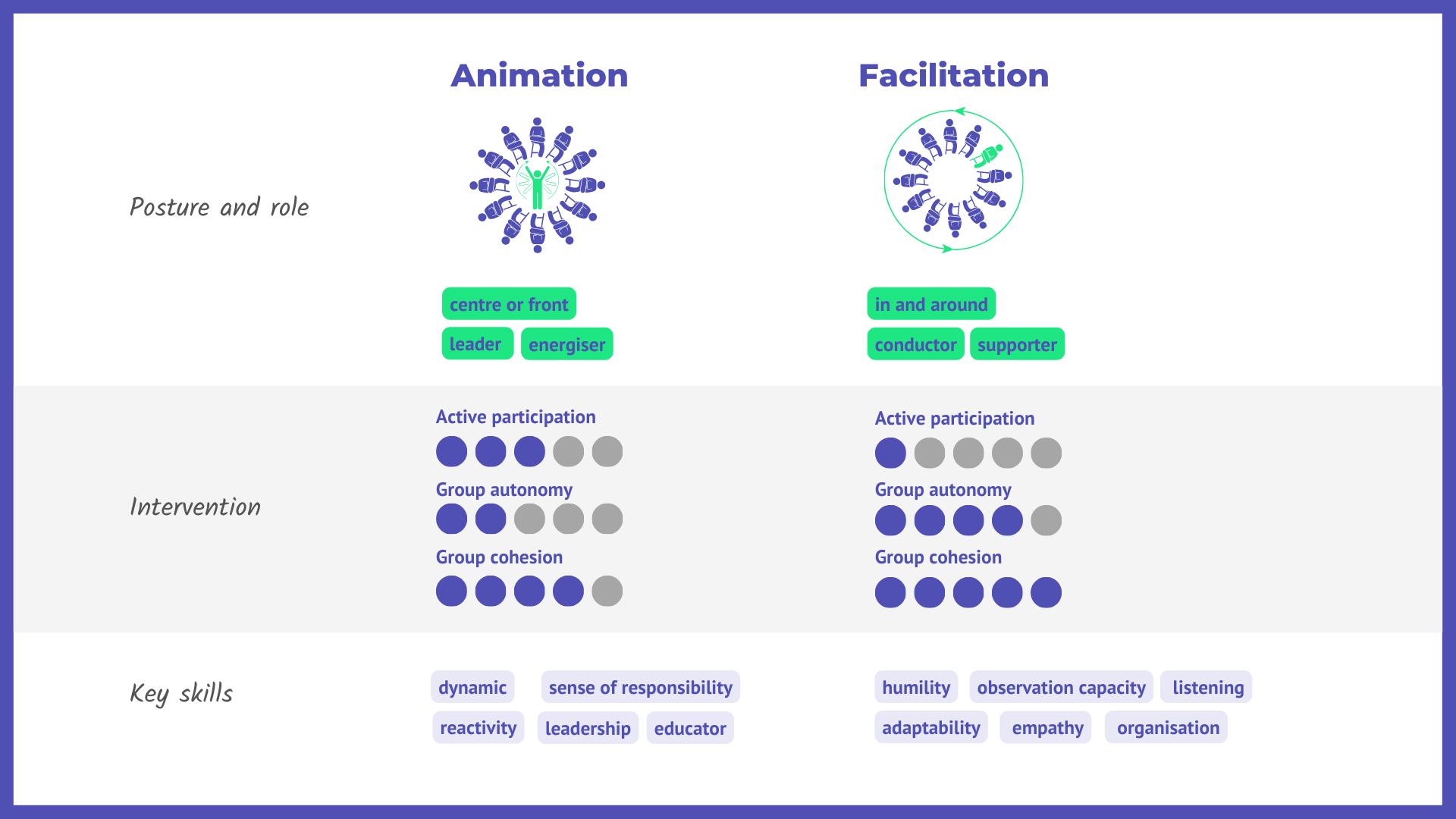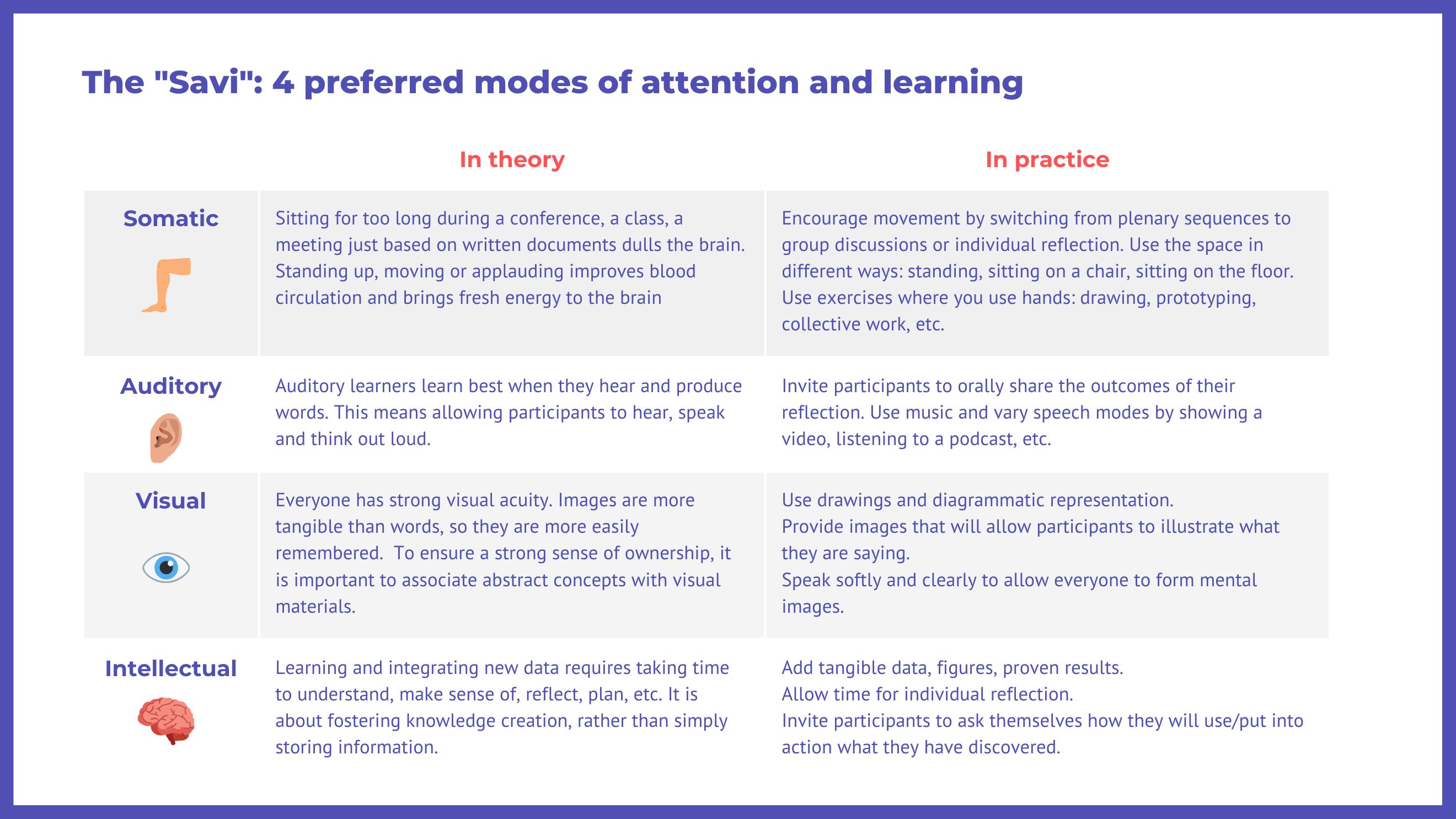To save colors and take care of the planet, print this text in shades of gray
The posture of facilitation
Use your life skills to serve the group
Théorie
Introduction
Why talk about facilitation posture rather than method? Because it is the way of using the tool that makes the difference between an ineffective or “magic” method.
In facilitation, we talk about posture to designate the life skills that allow the facilitator to be fully at the service of the group, drawing on their know-how and feelings.
Focusing on the posture of facilitation means:
- improving the ability to adjust, respond to unforeseen events, questions,
- better responding to interjections or the expression of emotions that are sometimes surprising or not always pleasant within the group,
- formulating more relevant and effective questions.
This last point is especially important since a method is not inherently powerful, its power comes through the quality of the questioning that accompanies it.
Description
Adopting a facilitation posture makes it possible to listen to the group, contributes to ownership through experimentation and promotes quality conversations that promote the emergence of the right answers/solutions/actions.
Tell me and I’ll forget.
Show me and I may remember.
Involve me and I’ll understand.
Indian proverb to which Imfusio adds:
Let me share the experience with others and I’ll make it my own.
What is facilitation?
The facilitator’s role in serving the group is therefore to:
- Clarify common intentions and maintain consistency throughout a project or meeting,
- Facilitate the establishment of a dynamic of committed actors (create desire),
- Ensure diversity, by inviting people who can be part of the project/team or the project/team ecosystem,
- Set up the conditions for collective intelligence by:
- Creating spaces of trust and sharing
- Energising through collaborative techniques
- Using creativity to open up reflections and promote the emergence of ideas.

Midwife and warrior, the two faces of the facilitator
Facilitation involves alternating between two different but complementary attitudes in one’s relationship to the group:
- Midwife: ask questions to the group and allow them find the answers, let go and adapt to the energy of the group, even if it means adapting the initially planned process;
- Warrior: hold the boundaries in keeping with the intention of the meeting, share your intuitions and beliefs when they can help the group take a step back, remind the participants of the principles of listening and co-responsibility if the discussions become pointless or off-topic.
What does a posture of facilitation look like?
During a meeting, a facilitation posture results in:
- “Deep listening”, i.e., what emerges from the group beyond the expression of each of its members
- A global view of the group and what the group produces
- A balance between the midwife attitude and the warrior stance.
Deep listening in practice
Practising “deep listening” means paying attention to what the group is building and living out together rather than to each other’s ego or idea.
This can result in not speaking to say nothing, taking notes to cross out what has been said and therefore is no longer to be said, etc.
This focused attention allows contributions to remain constructive and keeps the pace dynamic!
We find this practice in almost all collective intelligence methods and it is one of the key elements of the dialogue circle.
The facilitator ensures diversity in individual ways of operating
Every person has a preferred way of working and learning. Being aware of this makes it possible to adapt and diversify the tools used with a group to get better results.

Tips and tricks
- To learn more about the facilitator as a midwife and as a warrior: Power and Love by Adam Kahane
- To deepen the difference between a facilitator and an activity leader, here is a UDN (Université du Nous) video explaining this concept.